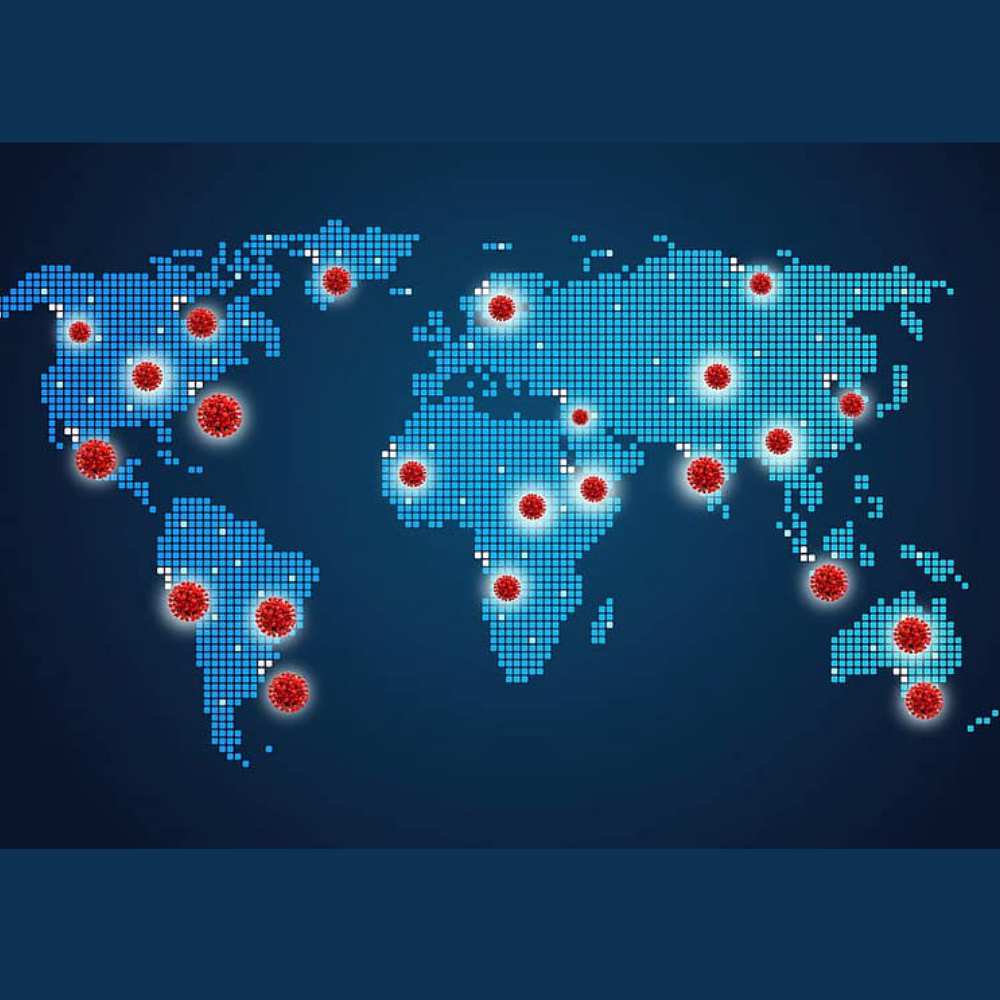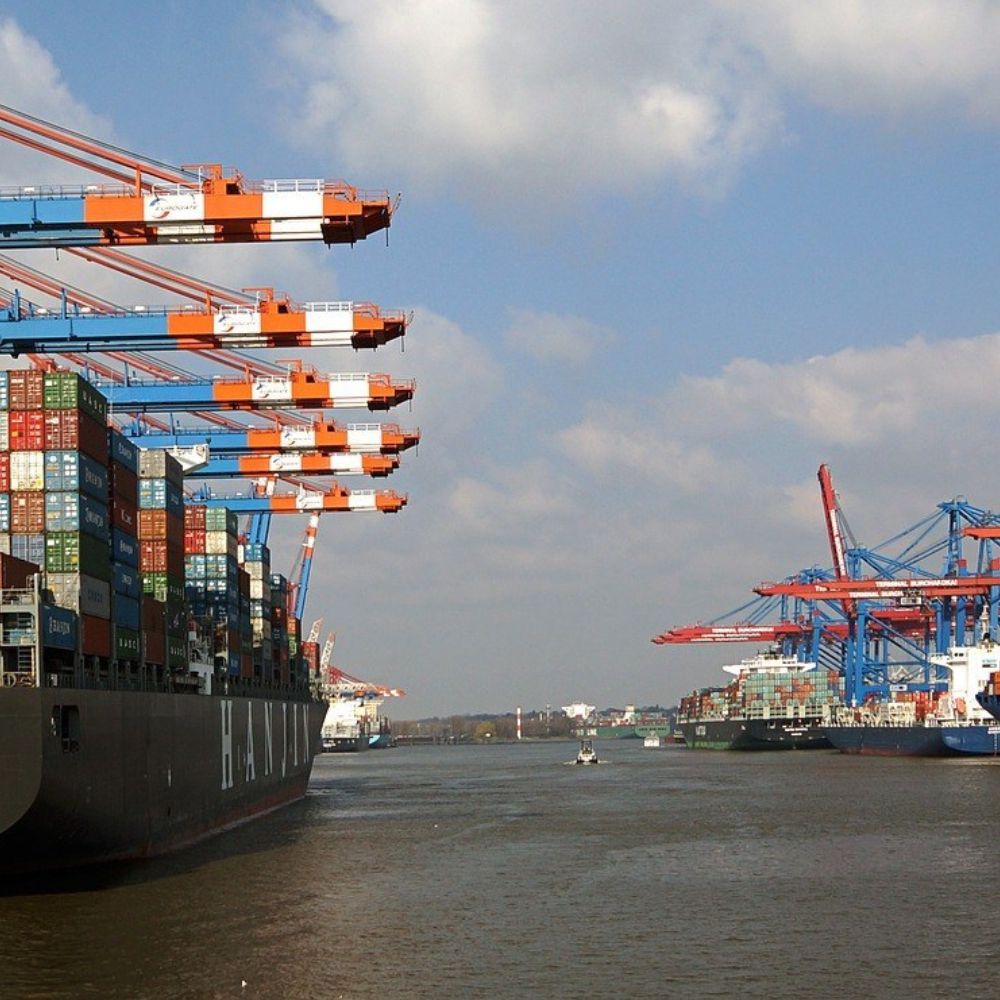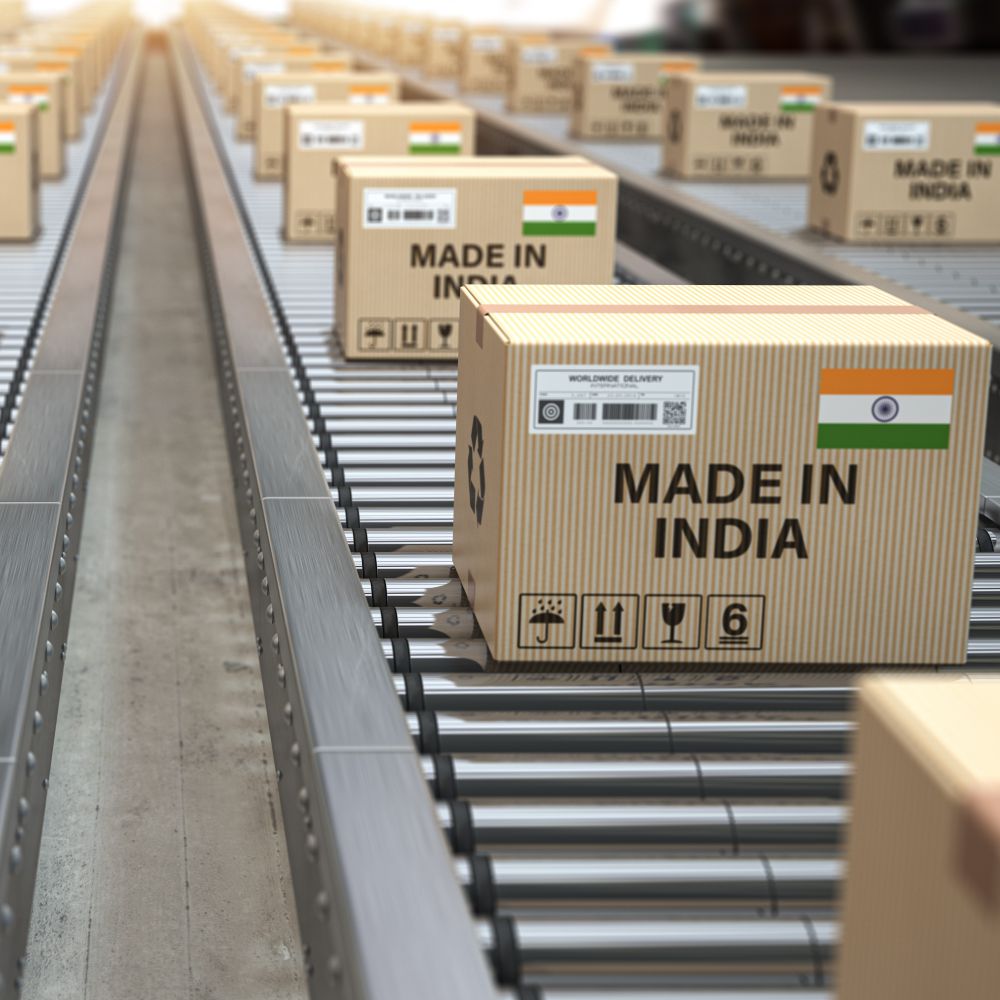Time has come for the global economies to thoroughly relook at their supply chains, which will help them tide over unprecedented times like these in a more resilient manner. The 4 Point Action Plan by CBRE Global Research team is your quick guide to revival and survival in the Post-Covid Era.
Supply chain disruptions historically arose on the supply or demand side but tended to be relatively short lived and were generally confined to individual companies, industries and sub markets, thereby creating supportive conditions for a quick rebound from any short term shocks that may have occurred. However, the deep and prolonged disruption caused by the COVID 19 pandemic, which caused a simultaneous disruption in global supply and demand within the space of a few months has uncovered serious flaws in supply chain organizations and raised questions as to the viability of long accepted supply chain practices.
This paradigm shift is prompting companies to review and transform their supply chain models as they attempt to recover from the current phase of the crisis while looking to mitigate the impact of similar shocks that may occur in future. This ViewPoint by CBRE identifies the main supply chain priorities and strategies for companies preparing to operate in a world in which the movement of goods and people will be fundamentally different to the previous norm. These include:
EXPAND NETWORK RESILIENCY
The severe disruption caused by COVID 19 has exposed the danger of over reliance on a single base of production. A PwC survey of CFOs published in May found that 51% of respondents identified developing alternate options for sourcing as their top planned change to supply chain strategy. At the same time, “re shoring” is already a key topic in boardrooms and governments with manufacturing and sourcing links to Asia. In May, Taiwan Semiconductor Manufacturing Co. (TSMC) announced plans to build a US$12 billion semiconductor production plant in Arizona in the US.
Across key industries such as automotive, electronics, technology and consumer goods, nearly all supply chains can be traced to China, still the world’s dominant global manufacturer. While leading manufacturers and retailers with global visibility systems were made aware of initial Chinese supplier disruptions in the final months of 2019 enabling them to trigger the ramp up of secondary supplier sources and mitigate some of the impacts smaller firms with more regional and local suppliers and lacking the resources to invest in supplier visibility and resiliency were unable to do so.
With US-China trade conflict and rising labor costs already prompting many companies to move out of China in what has come to be known as a ‘China Plus One’ strategy, CBRE expects the pandemic to add impetus to plans to reduce supply chain dependency on China, and potentially any other single market.
Brand owners’ and manufacturers’ shift out of China will form part of an overarching theme of a move away from centralized supply and towards greater diversification. Wistron a major supplier of smartphone parts expects its non-China production capacity to increase to 50% by 2021, more than double current levels.
While it is still too early to identify the market beneficiaries of supply chain diversification, the growing focus on reorienting supply chains and diversifying manufacturing locations means that those countries that are already investing in new infrastructure and are more open to attracting industry will likely receive the lion’s share of re-locations.
Vietnam has already emerged as a popular destination. Samsung has shifted much of its smartphone production to Vietnam over the past decade and now manufactures 50% of its phones in the country. Other recent re-locations include Taiwan’s Pegatron, which earlier this year announced plans to set up a US$150 million plant. The north of the country is a keenly sought-after location owing to its multimodal shipping channels via N ? i Bài International Airport in Hanoi; Hai Phong Port; and road network linked to China.
Other preferred locations include Thailand, already a regional automotive production hub. The Thai government is attempting to attract foreign investment in key manufacturing industries via the introduction of tax incentives and deductions along with measures to make it easier to do business. Nissan recently announced a THB 10 billion expansion of its production facilities in the country.
India offers low labor costs, improving infrastructure, Special Economic Zones (SEZs) offering duty free exports and other policies supportive of business attributes that have already secured significant investment in manufacturing facilities from Foxconn, amongst others.
Indonesia and the Philippines round out the list of potential sites. In the former, the government in May appointed PT Persero Wijayakusuma Industrial Estate (KIW) as the developer of the Brebes Industrial Estate (KIB) in Central Java, which has reportedly been earmarked to accommodate the relocation of US factories from China. Several Taiwanese textile and garment manufacturers including Eclat Textile one of Nike’s top suppliers recently confirmed plans to establish new plants in Indonesia.
Although this focus on diversifying supply chains is already visible in selected industries particularly among technology firms, many of which decided some time ago that branching out from China centric production should be a strategic priority more will follow suit as part of a broader shift towards strengthening global network resiliency against future shocks.
For most firms choosing to re-balance, the relocation process will be expensive and involve considerably more than uplifting a factory, since supply ecosystems and downstream fulfilment networks in China have evolved over a period of several decades. Ideally, companies must reorient supply chains, so they can withstand disruption and outperform the competition when such events occur, thereby ensuring their business can quickly adapt to, and even thrive on, disorder.
BOOST LOCAL INVENTORY
One of the most instantaneous and visible impacts of the spread of COVID 19 has been the rapid depletion of inventory – a trend that has seen supermarket shelves left empty as consumers panic buy large quantities of daily necessities in anticipation of potential quarantine measures, and automotive manufacturing plants forced to halt production due to a lack of intermediate parts and materials. This has highlighted the downside of supply chains reliant on just in time principles and the long established practice of maintaining lean inventory levels.
In order to maintain sales as supply chains are reset, CBRE believes brands and manufacturers, especially those engaged in the production of necessities, may tend to store more stock and keep inventory closer to consumption points and service locations. Maintaining higher stock levels in country is set to generate more warehousing demand and will transform how companies store goods, plan infrastructure and serve their local customers.
E-commerce adoption is expected to continue after the pandemic has been contained. The future may also see governments identify certain foodstuffs and medical supplies as strategic commodities and keep large quantities of these items in stock to ensure sustainable supply. This may lead to stronger demand for last mile logistics and warehousing space, especially in locations near consumers.
Online marketplaces and other fulfilment businesses with immediate delivery requirements will need fulfilment centres in and around cities, particularly smaller warehouses able to accommodate numerous delivery vehicles in locations that can expedite the time required to get an order into the hands of the consumer.
However, most major cities in Asia possess limited cost-effective urban infill real estate options to support the rapid growth in e-commerce home delivery particularly for goods that consumers expect to be delivered immediately. This may provide opportunities for property owners and investors to consider upgrading or redeveloping dated industrial facilities to improve efficiency.
Although many cities in Asia suffer from a scarcity of industrial land, along with increasing restrictions and congestion, several markets have managed to organically develop solutions over time by utilizing a combination of big distribution centres outside major ring roads together with a larger number of smaller locations inside cities where orders can be subdivided for delivery by small vehicles such as motorbikes and runner vans.
Leading examples include the rapid penetration of the Go Jek network and its competitors to serve the Greater Jakarta area and across Java with reduced delivery rates, even in the face of uneven road infrastructure, incessant traffic and persistent flooding. In Hong Kong, online grocery platform HKTV Mall has utilized its delivery vans as mobile pick up stations as an ad hoc solution to the surge in orders. New distribution channels have emerged in India during the lockdown, with FMCG company ITC Ltd partnering with Domino’s Pizza and food delivery apps like Zomato for last mile delivery, and several e commerce platforms utilizing neighborhood store networks for order collection.
While millennials in Asia have displayed a stronger preference for the delivery of online orders to their offices compared to their European and American peers, the accelerated adoption of home working could potentially boost demand for home delivery across the region. This will influence last mile delivery network design and site selection and is also likely to necessitate a creative approach towards leveraging existing brick and mortar retail networks.
ADAPT TO THE NEW RETAIL LANDSCAPE
Although e-commerce was already seeing widespread use by regional consumers, the COVID 19 pandemic has accelerated adoption as social distancing and stay at home orders force people to go online to purchase daily necessities. More demographic groups that had not purchased products online before are now doing so regularly and have come to realize that e-commerce ordering and delivery is both convenient and safe.
CBRE believes that even after the pandemic has been contained, a large volume of purchases will continue to be fulfilled by e commerce, particularly in countries where there is limited retail infrastructure. In some particularly underdeveloped markets, e-commerce may even overtake less efficient multi-tier distribution and brick & mortar retail networks. This may create delivery challenges and in some situations create demand for centralized pickup and delivery centres, of which some may be 24/7 and automated.
Despite registering rapid growth in sales, many e-commerce platforms have struggled to keep up with the surge in orders due to labor shortages and inventory related bottlenecks. This situation has been compounded by the fact that many e-commerce fulfillment centres were designed to handle seasonal demand spikes and much lower volumes at other times. If further outbreaks occur, leading to the closure of part of or all affected markets, such facilities may struggle to keep up with demand.
Although hiring more staff, introducing automation and taking on additional space may provide
short term solutions, some operators appear to have succeeded in catering to surging demand by leveraging existing infrastructure such as using a designated area of a retail store tocoordinate order delivery and collection and investing in software platforms or partnering with logistics teams to track stock and maintain good visibility of inventory, no matter where it is located or who owns it.
Demand for food delivery has surged since the pandemic as people have been unable or hesitant to dine in. Occupier demand for cloud kitchens serving orders from online delivery apps has increased, leading to additional demand for industrial space.
Recent years have already seen many landlords raise the proportion of F&B tenants in their portfolios as part of a broader shift towards “retailtainment” a trend expected to maintain momentum in the years ahead. From a supply chain perspective, restaurants especially quick serve outlets are far more demanding than other retail categories due to their almost daily requirements for fresh ingredients and multi-channel complexity linked to a physical location that serves dine in clients as well as a platform to serve a growing volume of home delivery and self pickup orders from the same location.
A stronger emphasis on F&B as the focal point of shopping malls will necessitate far more efficient and resilient supply chains than those which have traditionally served larger format, static brick & mortar stores in other retail categories.
LEVERAGE NEW AND LOW COST TECHNOLOGY
While manpower was already a challenge when economies were booming, COVID 19 has heightened manufacturers’ and logistics providers’ concerns around labor supply. Health concerns have exposed labor as a risk in the warehouse whether people fall ill or call in sick for fear of potential disease transmission in the workplace.
Automation is being viewed as a solution to these new labor risks, with flexible automation and robotics solutions capable of yielding significant benefits. For example, not only can companies keep operating even during severe labor shortages, they can also more closely and efficiently adhere to hygiene protocols when products are only handled by robots. Automation can also be used to scale capability and drive down cost per delivery. For logistics networks, this will have a big impact on the last mile, where automation will require fewer employees.
CBRE expects flexible automation solutions and lean reconfigurable technology to gradually replace people, thereby ensuring remote and continual control over this aspect of supply chain operations. These requirements are likely to be integrated with and may in some cases replace many of the functions typically fulfilled by high cost storage systems like Automated Storage and Retrieval Systems (ASRS) and other legacy machinery, such as cross belt conveyors, still in widespread use.
The latest solutions utilize robotics applications, Automatic Guided vehicles (AGVs) and Internet of Things (IoT) technology supported by cloud software to adapt to changing warehouse configurations and product flows. These systems can be acquired at a fraction of the cost of those that require larger infrastructure and can be easily relocated or physically replicated in almost any market.
Automation will also be adopted in last mile delivery. With COVID 19 spurring consumer demand for contactless last mile delivery, delivery by drones or AGVs may even emerge as a selling point for companies seeking to reassure shoppers that no human handled their order at any stage of the supply chain.
CONCLUSION
COVID 19 has exposed the vulnerabilities in global supply chains and is challenging the conventional wisdom around many long established supply chain practices. Over reliance upon a single market is untenable, while maintaining lean inventory leaves companies exposed to sudden shocks. People only based solutions even those in markets with low labor costs are no longer viable in the medium to long term.
Brands and manufacturers along with the developers that build the industrial and logistics infrastructure on the real estate to fulfil their requirements must act now to address these supply chain challenges. Those that do will possess a significant advantage as economic activity resumes and companies prepare to compete in the post pandemic world, ready to adapt and thrive with the next shock.

Categories

Magazine Editions






















